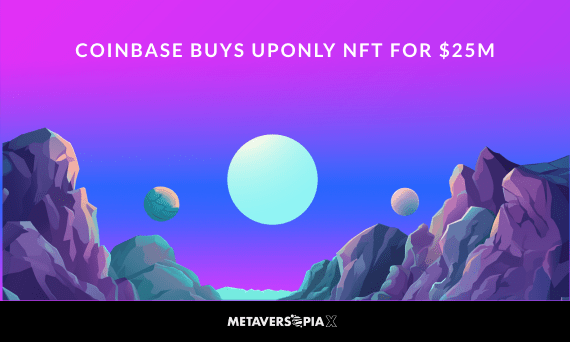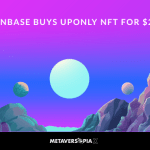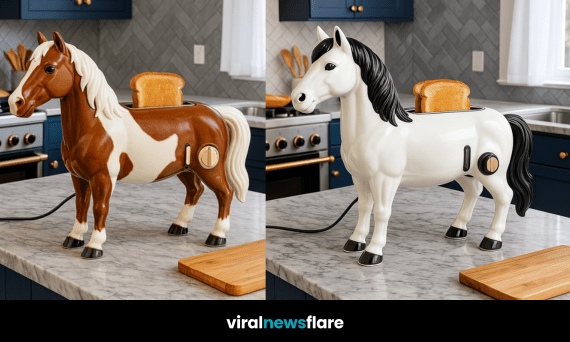
Coinbase Buys UpOnly NFT for $25M
Coinbase buys the “UpOnly” NFT from crypto influencer Cobie in a move that’s making waves across the Web3 world. The global exchange reportedly spent $25 million in USDC on the token — a bold purchase that has everyone talking.
While at first glance it may sound like another extravagant NFT headline, this acquisition marks something far more significant. It showcases how NFTs are evolving beyond digital art and speculation, becoming functional smart contracts that connect ownership to creative output.
In this blog, we break down the full story behind the purchase, why Coinbase made the move, and what it means for the future of NFTs, media, and crypto culture.
What Is the UpOnly NFT?
“UpOnly” isn’t just a digital picture or meme. It’s an NFT linked to UpOnlyTV, the once-popular crypto podcast hosted by Cobie and Ledger, known for its tongue-in-cheek humour and candid market takes.
What makes this NFT unique is that it’s programmed with real-world obligations. Owning the token grants the buyer specific rights — most notably, the right to request new episodes of UpOnlyTV.
In fact, the NFT’s metadata contains what’s known as a “burn clause.” If the token is ever burned (permanently destroyed on the blockchain), it triggers a requirement that eight new episodes must be produced within three months.
Crucially, Coinbase doesn’t gain creative control. The hosts can still make fun of the buyer, refuse sponsorships, or decide the tone of the show entirely on their own. That makes the token part business contract, part cultural experiment — and perhaps one of the most intriguing uses of blockchain yet.
Why Coinbase Made the Move
At first glance, paying $25 million for a podcast-linked NFT might sound outlandish. But for Coinbase, this move fits neatly into its broader Web3 strategy.
1. Strengthening Its Web3 Identity
Coinbase has been repositioning itself as more than a trading platform. By acquiring UpOnly, the company demonstrates its commitment to supporting crypto-native culture — something that appeals directly to its community.
NFTs like this aren’t just investments. They’re statements that Coinbase understands and values the humour, memes, and creative energy that built the crypto space in the first place.
2. Reviving an Iconic Brand
UpOnlyTV was beloved during the last bull run for its unfiltered, often chaotic discussions about markets, influencers, and crypto drama. Coinbase now holds the key to reviving that energy — either through new episodes or creative spin-offs.
This could help Coinbase tap into nostalgia while introducing its brand to new audiences in a fun, organic way.
3. Experimenting With NFT Utility
The UpOnly NFT isn’t just a collectible; it’s a smart-contract-based production deal. By purchasing it, Coinbase demonstrates how NFTs can go beyond art — becoming functional digital contracts that manage intellectual property or creative output.
This could inspire a new wave of utility-based NFTs, where tokens represent services, media rights, or production triggers.
What Makes This NFT Different
It’s Coded to Create
Unlike typical NFTs that just exist as digital art, the UpOnly token is coded to make things happen. If Coinbase wants, it can use the NFT to demand fresh episodes. If it burns the token, it automatically triggers content production.
That connection between blockchain and real-world action is what sets this NFT apart — it blends entertainment, technology, and obligation into a single digital asset.
It Keeps Authenticity Intact
Cobie and Ledger still retain full creative control. Coinbase can’t steer the narrative or force the hosts to take a corporate tone. This keeps UpOnly’s irreverent charm alive while allowing Coinbase to benefit from its cultural impact.
It Pushes NFTs Beyond Speculation
Most NFTs rely on hype or rarity to hold value. UpOnly redefines that by offering functional utility and entertainment value, not just aesthetics or collectability.
That’s an important step toward sustainability in the NFT sector, which has faced criticism for being overly speculative.
What It Means for the Future of NFTs
The implications of this move go far beyond Coinbase or Cobie. It hints at an evolution in NFT design and how digital ownership could work in the years ahead.
1. NFTs as Smart Contracts for Creators
This purchase shows how creators can use NFTs to tokenise their creative rights. Imagine musicians issuing NFTs that grant holders the right to request live performances, or filmmakers selling tokens that fund and trigger new projects.
In essence, NFTs could become programmable agreements, redefining how fans and companies interact with content creators.
2. A Bridge Between Brands and Culture
Coinbase’s investment places it squarely in the middle of crypto culture — not just as a financial entity but as a cultural participant.
In Web3, authenticity matters. By engaging with creators in creative ways, brands can build trust that no advertising campaign can buy.
3. The Rise of Utility-Driven NFTs
Many in the NFT space have been searching for utility — ways for tokens to do more than sit in wallets. The UpOnly NFT demonstrates a template for interactive, outcome-based NFTs.
Future tokens might include triggers for exclusive content, community decisions, or even brand partnerships — all coded directly on the blockchain.
The Broader Impact on Web3 and Media
Redefining Ownership
Coinbase’s purchase brings the idea of digital ownership with responsibility into focus. Ownership isn’t just possession; it can mean participation, obligation, and collaboration.
Inspiring Other Platforms
Other companies may follow suit, acquiring NFTs that connect them to cultural projects. Exchanges, DAOs, and even streaming platforms could use this model to commission content through code.
Merging Media and Blockchain
The line between entertainment and blockchain is blurring fast. This deal shows how the two can coexist — where the blockchain becomes a new kind of production studio, automating creativity through smart contracts.
Reactions From the Community
As expected, reactions online have been mixed.
Some see the $25 million purchase as a marketing masterstroke, blending humour, nostalgia, and cultural relevance. Others call it symbolic excess — a move designed more to spark headlines than create value.
But most agree on one point: the deal has people talking about NFTs again, and in a new way. For an industry that thrives on attention and innovation, that’s a win in itself.
What Happens Next?
The big question now is whether Coinbase will use the NFT to demand new UpOnly episodes — or burn it to trigger the automatic production clause.
Either route creates potential for renewed engagement and viral content. And in typical Cobie fashion, the hosts might turn the entire thing into a meta-commentary on crypto’s absurdity.
Whatever happens next, one thing is clear: this purchase won’t be forgotten anytime soon.
Final Thoughts
Coinbase’s decision to buy the UpOnly NFT for $25 million marks a fascinating new chapter in NFT history. It shows how blockchain technology can anchor creativity, not just speculation.
By linking ownership to action, the UpOnly token represents a bridge between culture and code — one that could reshape how brands, creators, and audiences interact in the Web3 era.
As the NFT market matures, we can expect more projects like this — part art, part contract, and entirely built on innovation. Coinbase may have just paid for a digital token, but what it really bought was a piece of crypto history.















